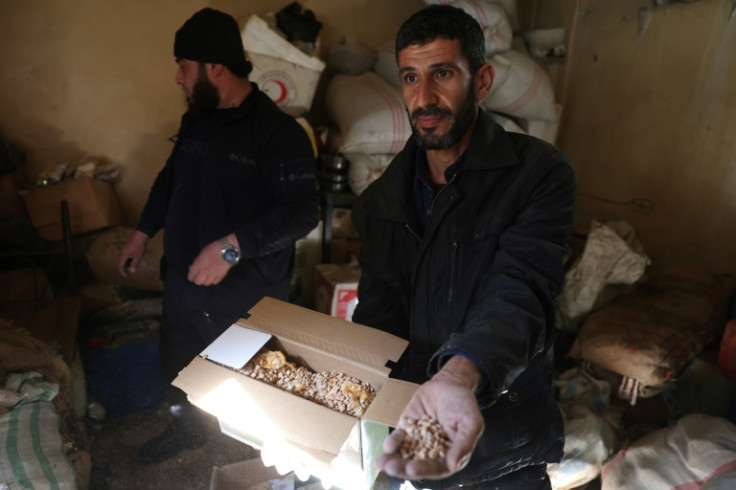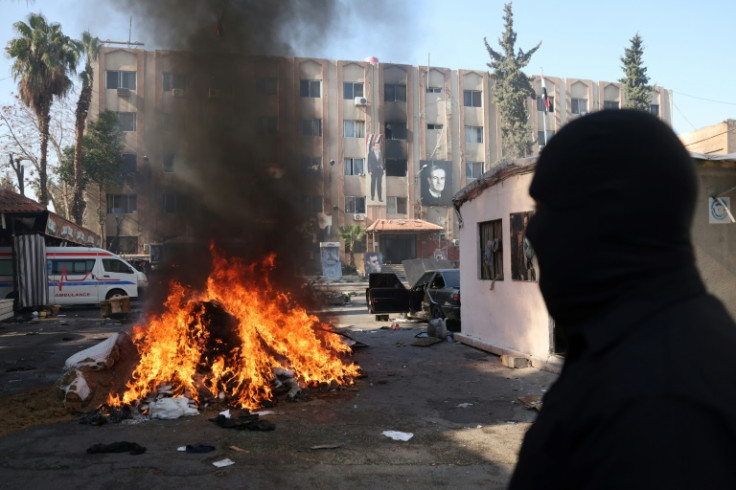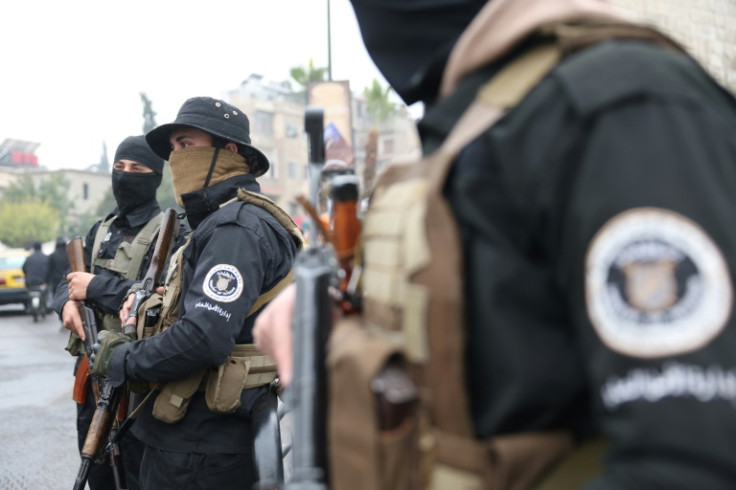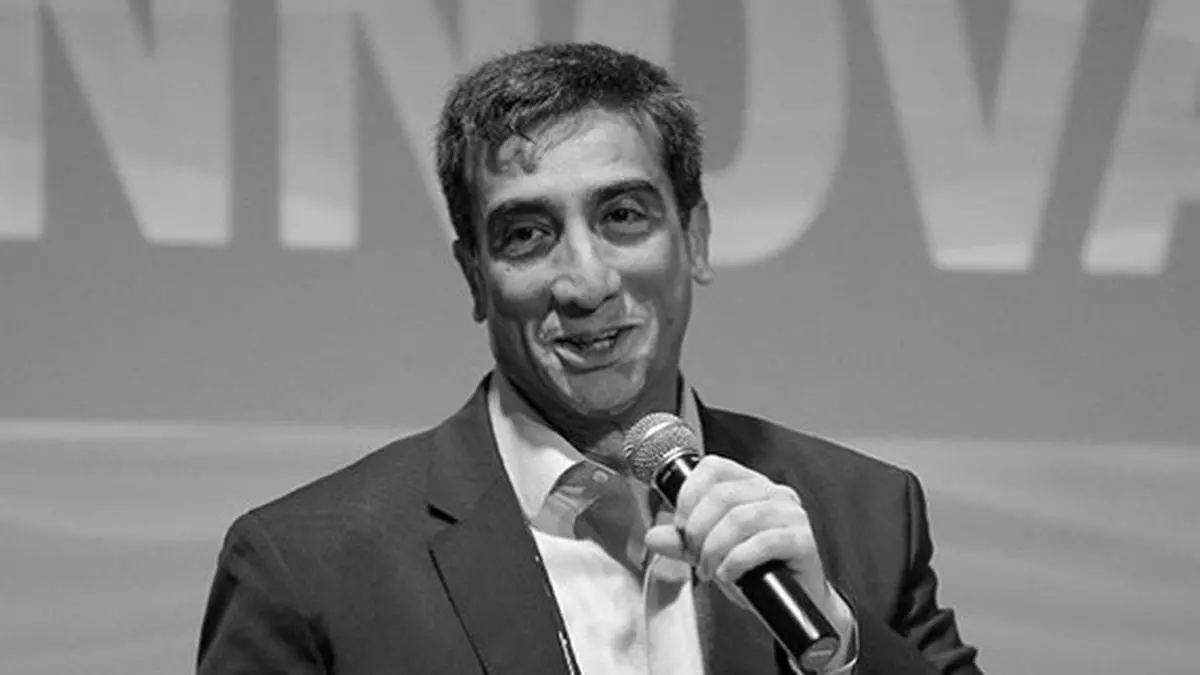Angry protests broke out Wednesday in the heartland of deposed Syrian ruler Bashar al-Assad’s Alawite minority, a war monitor and witnesses said, after a video circulated showing an attack on a shrine.
The Syrian Observatory for Human Rights monitor said thousands-strong demonstrations took place in the coastal cities of Tartus and Latakia, both Alawite strongholds, as well as in parts of the central city of Homs and other areas, including Assad’s hometown of Qardaha.
Witnesses confirmed to AFP that demonstrations broke out in Tartus and Latakia, as well as nearby Jableh, with some estimating the number of protesters in the thousands.
The protests are the largest by the Alawites since Assad’s fall earlier this month and come a day after hundreds protested in Damascus against the torching of a Christmas tree.
Syria’s new Islamist rulers have sought to assure religious and ethnic minorities that their rights would be upheld.
The transitional authorities, appointed by Islamist group Hayat Tahrir al-Sham (HTS) which led the offensive that toppled Assad, said in a statement that the shrine attack was not recent.
The footage showing “the storming and attack” of the shrine in Aleppo is “old and dates to the time of the liberation” of the northern Syrian city earlier this month, an interior ministry statement said.
It said the attack was carried out by “unknown groups” and that “republishing” the video served to “stir up strife among the Syrian people at this sensitive stage”.
Images from Jableh on Wednesday showed large crowds in the streets, some chanting slogans including “Alawite, Sunni, we want peace”.
“We are calling for those who attacked the shrine to be held to account,” said Ali Daoud, a protester in Jableh.
State news agency SANA said police in central Homs imposed a curfew from 6:00 pm (1500 GMT) until 8:00 am on Thursday, while local authorities in Jableh also announced a nighttime curfew.
The Observatory said the protests erupted after a video began circulating earlier Wednesday showing “an attack by fighters” on an important Alawite shrine in the Maysaloon district of Syria’s second city Aleppo.
It said five workers were killed and that the shrine was set ablaze.
Observatory chief Rami Abdel Rahman said the exact date of the video was unknown, but that it was filmed early this month, after the HTS-led offensive began in late November.
The rebel forces launched a lightning offensive and seized control of major cities, among them Aleppo on December 1, before ousting Assad a week later.
AFP was unable to independently verify the footage or the date of the incident.
Assad long presented himself as a protector of minority groups in Sunni-majority Syria.
The new authorities meanwhile torched a large stockpile of drugs on Wednesday, according to two security officials, including one million pills of captagon whose industrial-scale production flourished under the deposed leader.
Captagon is a banned amphetamine-like stimulant that became Syria’s largest export during the country’s civil war since 2011, effectively turning it into a narco state under Assad.
“We found a large quantity of captagon, around one million pills,” said a balaclava-clad member of the security forces, who asked to be identified only by his first name, Osama, and whose khaki uniform bore a “public security” patch.
An AFP journalist saw forces pour fuel over and set fire to a cache of cannabis, the opioid tramadol, and around 50 bags of captagon pills in a security compound formerly belonging to Assad’s forces in the capital’s Kafr Sousa district.
Captagon has flooded the black market across the region in recent years, with the oil-rich Gulf a major destination.
“The security forces of the new government discovered a drug warehouse as they were inspecting the security quarter,” said another member of the security forces, who identified himself as Hamza.
Authorities destroyed the stocks of alcohol, cannabis, captagon and hashish in order to “protect Syrian society” and “cut off smuggling routes used by Assad family businesses”, he added.
Syria’s new Islamist rulers have yet to spell out their policy on alcohol, which has long been widely available in the country.
Since toppling Assad, Syria’s new authorities have said massive quantities of captagon have been found in former government sites around the country, including security branches.
Maher al-Assad, a military commander and the brother of Bashar al-Assad, is widely accused of being the power behind the lucrative captagon trade.
Experts believe Syria’s former leader used the threat of drug-fuelled unrest to put pressure on Arab governments.

AFP

AFP

AFP

AFP

AFP







Leave a Comment